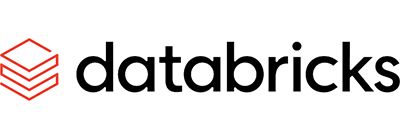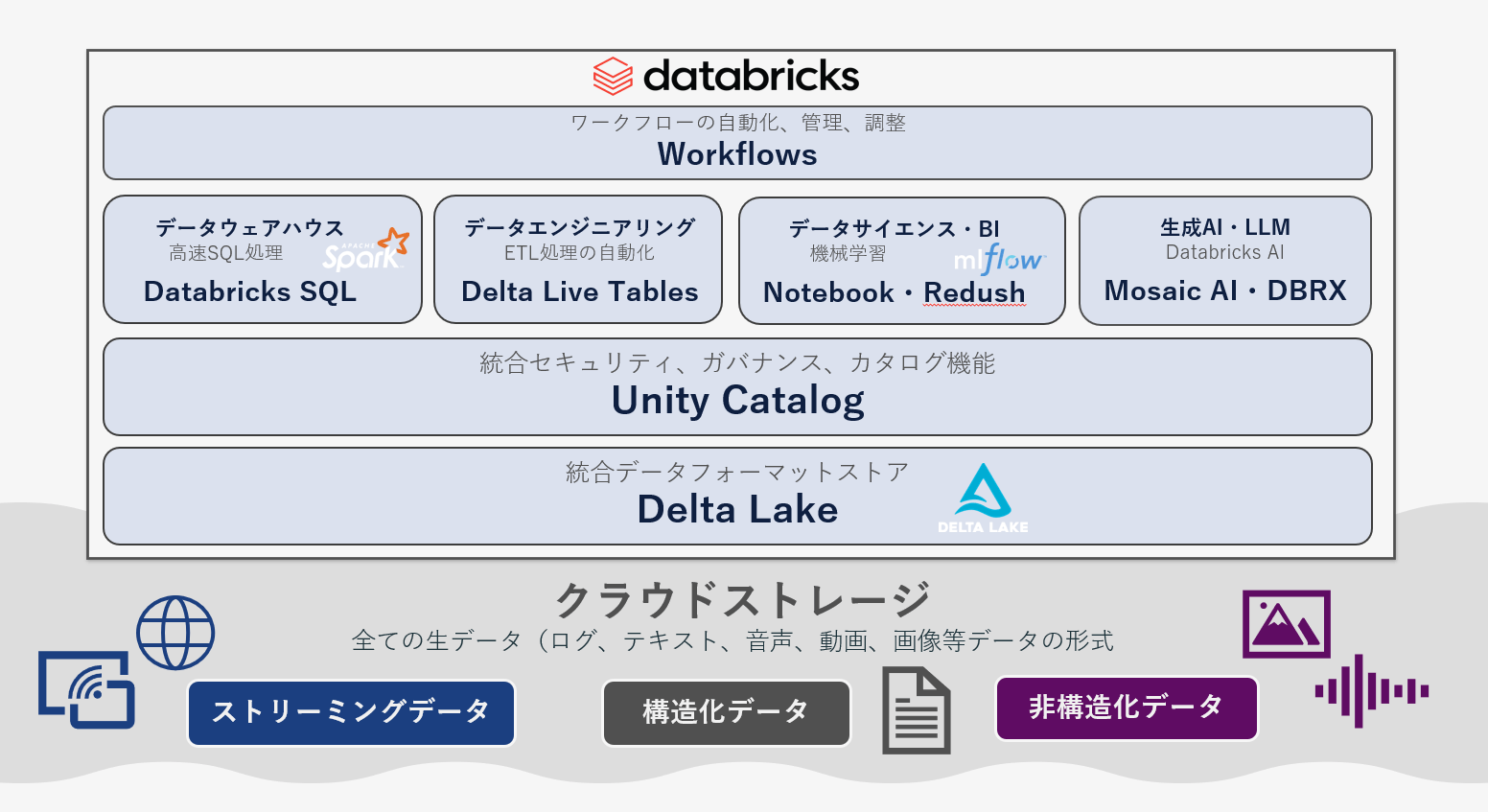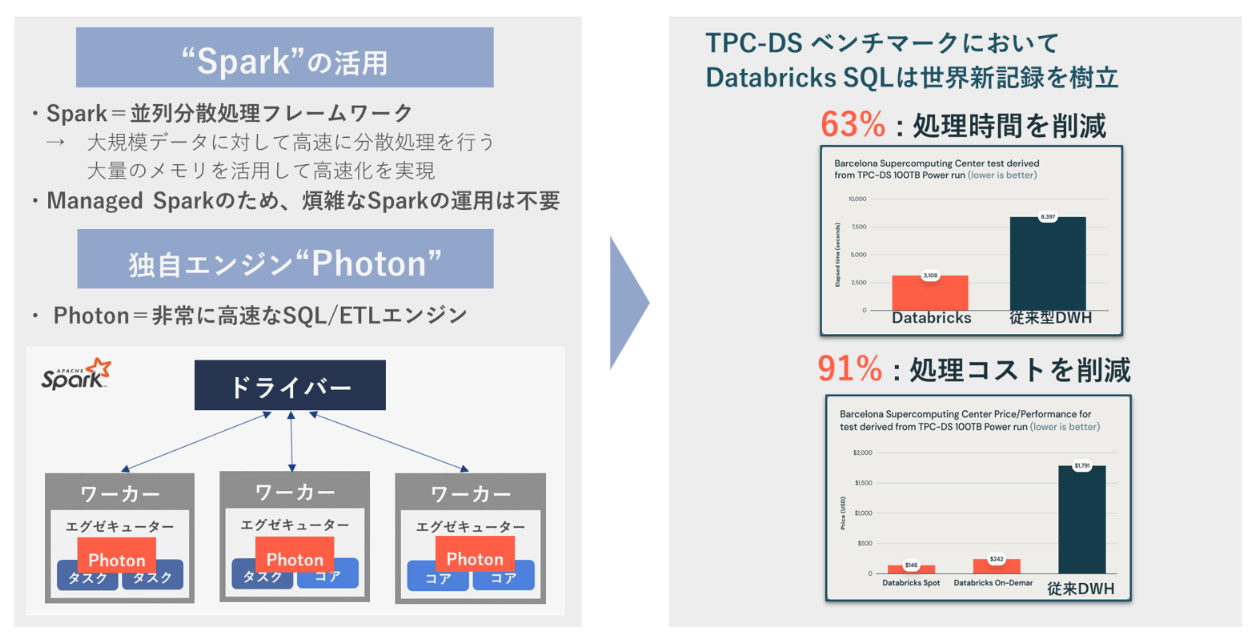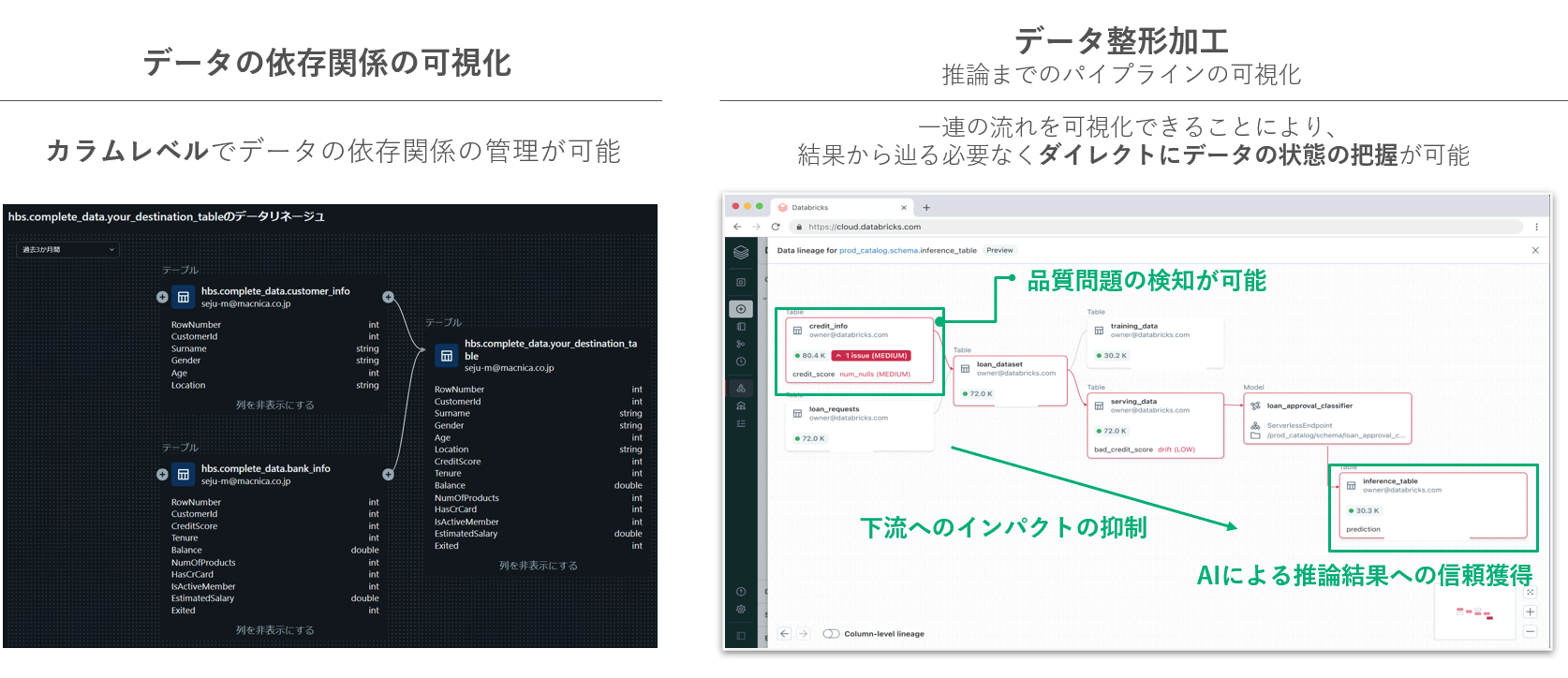
Databricks
databricks
What is a lake house?
Next-generation data integration platform
Supports a wide range of data types, from structured to semi-structured to unstructured
(PCI-DSS, HIPAA, FedRAMP, ISO 27001, ISO 27017, ISO 27018, SOC 2 Type II compliant)
Lake House Configuration

Feature details (SQL, AI, Unity Catalog)
Databricks SQL: Achieve high-speed processing of large amounts of data at low cost.

*TPC-DS: A data warehouse benchmark defined by the Transaction Processing Performance Council (TPC)
Databricks AI: Open Source LLM “DBRX”
This is a unique open source LLM developed from scratch by Databricks, and also supports Japanese.
MoE technology enables high-speed learning/inference even with fully trained models.

Unity Catalog: Data management with data catalog function

In addition to flexible data permission management, data dependencies can be visualized and data quality can be tracked.
lake house architecture
Lakehouse is equipped with functions for collecting, processing, and storing data, developing and operating AI models, and visualizing data on a dashboard (BI) on a single platform. It enables centralized data management and preparation of source data and development environments for introducing AI.
Databricks will be centralized as an access point, and governance controls will ensure data quality and security while integrating with various tools.

Inquiry/Document request
In charge of Macnica Databricks Co., Ltd.
- TEL:045-476-2010
- E-mail:databricks-sales@macnica.co.jp
Weekdays: 9:00-17:00